The week at a glance
It was generally a pretty chilly week with hints of more snow and below-zero temperatures mixed with (towards the end of the week) a rather chilly blow form the northwest. Perhaps unsurprisingly it's the time of year when few (or in this case, any) real A-grade rarities are up for grabs. There was, however, some quality on offer and, fittingly, the stars of the week had a decidedly Arctic air to them.

Gyr Falcon, Castlemaine, Kerry (Photo: Sean Ronayne)
It was a year ago this week that Scilly unleashed one of the big surprises of the birding year of 2007 — the Great Blue Heron that made an all-too-brief landfall on St. Mary's on 7th December 2007 raised firstly eyebrows, then blood pressure and, finally, a few bank balances with its appearance. This year, the 7th December was marked not by the arrival of a British first, but an awesome white Gyrfalcon, which, after time on St. Martin's, relocated to St. Mary's on 8th, where it remained to 10th. The last Gyr on Scilly was in December 2002, and that bird too spent time on St. Martin's and St. Mary's. Prior to that, the last most recent record was an elusive bird that spent up to four months around the islands in early 1985. The Gyrfalcon mentioned in last week's review — the beautiful white juvenile off the Kerry coast — fared a little less well than the bird on Scilly. Initially picked up on a boat off the Blaskets on 25th November, the bird was cared for at sea and fed chicken before release on 30th November, whilst still in the Atlantic. The bird returned to the boat and was once again taken into care and, when the boat docked in Dingle on 30th November, the bird was taken into care in Killarney. This week, the bird was thought to be healthy enough to be released at Castlemaine (Co. Kerry) on 7th. Sadly, eyewitnesses report that the bird didn't manage much of a take-off, spent a little time waddling around on the ground and, following a brief tangle with a fence, was once again taken back into care. Fingers crossed this marvellous bird will be fit and healthy before too long. Back on Scilly, and a couple of days before the Gyrfalcon arrived on St. Martin's, the juvenile male Snowy Owl was reported on the same island, on Higher Town beach. The bird was last seen on 13th November on St. Mary's.
The adult White-billed Diver continued its residence off South Ronaldsay (Orkney), seen from 5th–7th at least. The sole other seabird record of note was the Little Auk seen off Selsey Bill (West Sussex) on 4th.

Cattle Egret, Dorchester-on-Thames, Oxfordshire (Photo: Gavin Farnell)
In Buckinghamshire, the Cattle Egret at Haversham remained popular over the weekend and was still present on 8th, appearing at nearby Linford Nature Reserve on 9th. Six birds were still around Walton (Somerset) on 6th and four on 9th, while a single bird was seen again at Dorchester-on-Thames (Oxfordshire) on 7th and 9th (having last been seen there on 10th November). Also on 7th, a single Cattle Egret was seen at Capel Fleet, Sheppey (Kent), with another in the county, at Dungeness, on 8th–9th. Also on 9th, a Cattle Egret was found at Angle Bay (Pembrokeshire) where it remained on 10th. In Ireland, a Cattle Egret was seen on Cuskinny Marsh (Co. Cork) on 6th, with another Cork report coming from Inchydoney on 8th. The Great White Egret was at Blashford Lakes (Hampshire) on 6th–9th with another at Shapwick Heath (Somerset) on 9th–10th. Spoonbill numbers were much as recent weeks, with 13 birds reported from Arne (Dorset) on 10th, and seven at Isley Marsh (Devon) on 7th, when one was seen on Tresco (Scilly). The Spoonbill at Cliffe Pools (Kent) was seen again on 10th. In Lancashire, the Glossy Ibis was at Marshside on 6th–10th with, remarkably, a second bird appearing in Greater Manchester, at Pennington Flash, for some of the morning of 7th (when the Marshside bird was known to be still present and correct). In Kent, the adult Night Heron reappeared on the canal near Hythe on 9th–10th having last been seen there on 23rd November. A Common Crane was at Peterborough (Cambridgeshire) on 4th, with two birds in the same county, at Eldernell, near the Nene Washes reserve, on 6th–9th. In Norfolk, 29 Cranes were counted at the Stubb Mill roost on 7th.

Cackling Canada Goose, Caerlaverock WWT, Dumfries & Galloway (Photo: Brian Henderson)

Black Brant, Holkham Freshmarsh, Norfolk (Photo: John Miller)
The adult Red-breasted Goose remained on Normandy Marsh (Hampshire) from 4th–10th, while a Richardson's Canada Goose remained on Berneray (Outer Hebrides) to 7th. In Dumfries & Galloway, the Cackling Canada Goose was at Caerlaverock on 5th–6th and the Taverner's Canada Goose was seen again near the reserve on 7th. The white Snow Goose remained at Druridge Pools (Northumberland) to 9th and a blue-phase bird was reported at Loch of Lintrathen (Angus) on 7th. In Norfolk, last week's reported white Lesser Snow Goose at Repps-with-Bastwick morphed (perhaps unsurprisingly) into a Ross's Goose. As well as spending several days around at Repps, it was also seen near Martham on 6th. A Black Brant was again at Gosport (Hampshire) on 6th–7th, with further singles on 6th being seen at Wells-next-the-Sea (Norfolk) and Graveney Marshes (Kent), with one still at Dungarvan (Co. Waterford) on 7th. The regular bird at Titchwell (Norfolk) was seen off and on throughout the week, while the bird from Wells moved a little way along the coast to Holkham on 8th–10th, and at least one bird was seen near Stiffkey on 10th too. On 9th, two Black Brants were seen in Pagham Harbour (West Sussex) with one there the following day.

Lesser Scaup, Hogganfield Loch, Clyde (Photo: Jim Duncan)
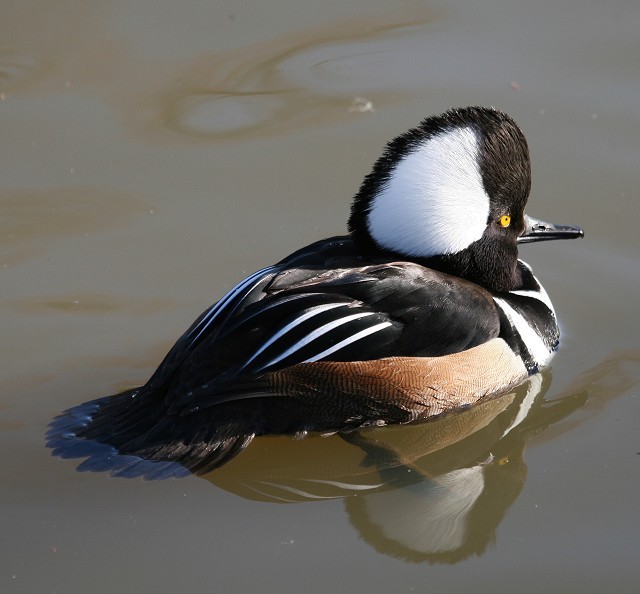
Hooded Merganser, Radipole Lake RSPB, Dorset (Photo: Graham Cox)
Five Lesser Scaup remained around the country over the weekend of 6th–7th. The single first-winter drakes were still at Quoile Pondage (Co. Down) and Frampton-on-Severn (Gloucestershire) with adult drakes remaining at Holme Pierrepoint (Nottinghamshire) and Hogganfield Loch (Clyde), and the lone female continuing to grace Loe Pool, Helston (Cornwall). There were nine Ring-necked Ducks to report this week, including a couple of new females — at Martnaham Loch (Ayrshire) from 4th–8th and another at Swineham GPs (Dorset) on 7th — and a new young male, near Bordon (Hampshire) on 10th. Another new arrival was seen on The Gearagh (Co. Cork) on 8th (joining the drake and female seen there last week). Wintering drake Ring-necked Ducks were at Foxcote Reservoir (Buckinghamshire) to 5th and Loch Bhasapol, Tiree (Argyll) to 10th, with the female in Cumbria, at Bassenthwaite Lake, seen again on 9th. The drake Ferruginous Duck was seen again at Cosmeston Lakes (Glamorgan) on 7th (having been reported here last on 23rd November) while a drake American Wigeon was on Broad Lough (Co. Wicklow) on 7th. After double figures last week, only six Green-winged Teal were noted this week, at Inner Marsh Farm (Cheshire) on 4th, Kinneil Lagoons (Forth) from 5th–9th, Marshside (Lancashire) on 6th–7th, Kilcoole (Co. Wicklow) on 7th, Bell Harbour (Co. Clare) on 8th and Belfast Lough (Co. Antrim) on 10th. Staying in Ireland, the Black Duck was still bobbing around in Ventry Harbour (Co. Kerry) to 7th at least. A drake Surf Scoter was seen at Lower Largo (Fife) on 6th and single females were still off Dawlish Warren (Devon) to 8th at least, and in Hough Bay, Tiree (Argyll) on 10th. In County Mayo, on the Mullet, a first-winter drake King Eider was seen off Frenchpoint Pier, Annagh Head on 10th and in Dorset, the drake Hooded Merganser at Radipole Lake was seen to the same date.
There was a decent scattering of Rough-legged Buzzards this week: the second-year bird at Reed (Hertfordshire) was seen on 5th–6th, and the adult was still around Farforth (Lincolnshire) from 5th–9th. At least one Rough-legged Buzzard was still around Millington (East Yorkshire) on 6th–9th, with two birds present on 10th, while further singles were seen at Leighton Moss (Lancashire), Capel Fleet, Sheppey (Kent) and near Hickling village (Norfolk), all on 6th, while on 7th one was seen near Waltham Abbey (Essex) and another was found near Coveney (Cambridgeshire), remaining to 10th. The 8th saw singles appear near Stalham (Norfolk) and, most notably, near Helston (Cornwall). The 10th saw a Rough-legged Buzzard fly over Kelling Heath (Norfolk) and another was at Elmley Marshes (Kent).
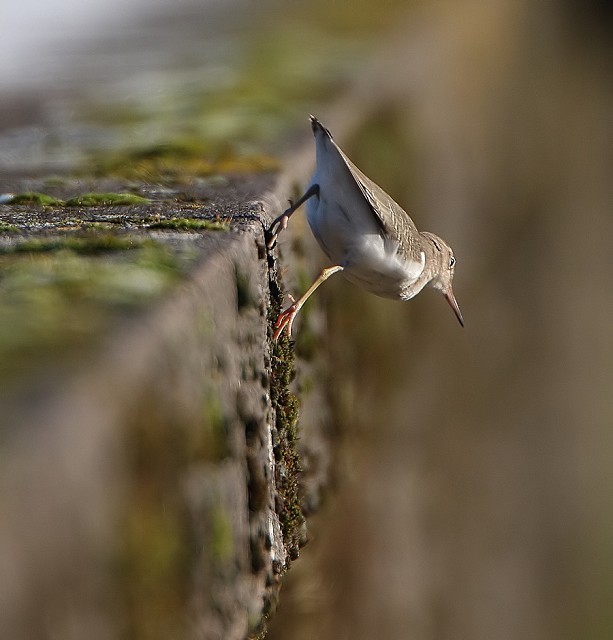
Spotted Sandpiper, Tittesworth Reservoir, Staffordshire (Photo: Dave Hutton)
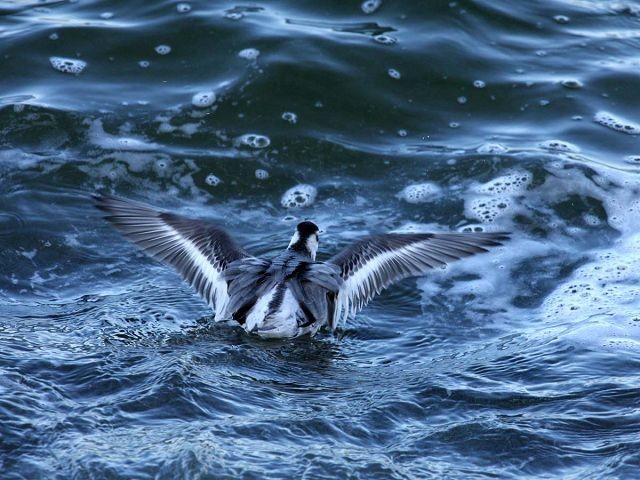
Grey Phalarope, Covenham Reservoir, Lincolnshire (Photo: John Hague)
The often obliging first-winter Spotted Sandpiper at Tittesworth Reservoir (Staffordshire) stayed to 10th and seems destined to remain for the rest of winter. A White-rumped Sandpiper was found at St. John's Lake (Cornwall) on 7th, and was seen again on 8th–9th, while the adult Long-billed Dowitcher at Dundalk (Co. Louth) remained to 7th. In Suffolk, the Lesser Yellowlegs was back at Southwold on 5th–6th (having been seen there from 21st December 2007 to 9th February 2008, as well as for two days in midsummer as well). The first-winter Grey Phalarope was still at Covenham Reservoir (Lincolnshire) to 10th.
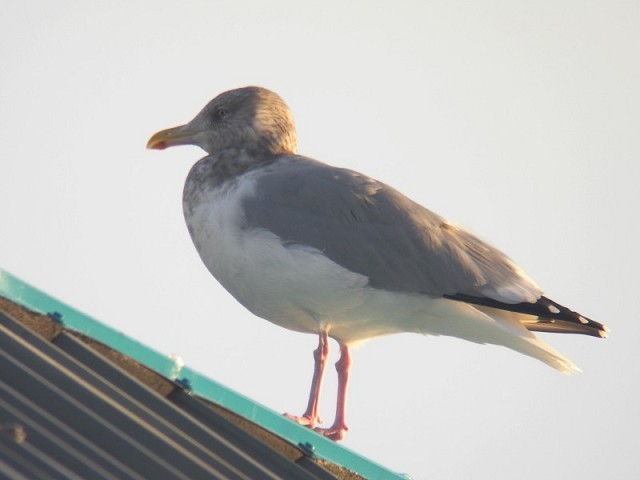
American Herring Gull, Galway, Galway (Photo: Tom Cuffe)
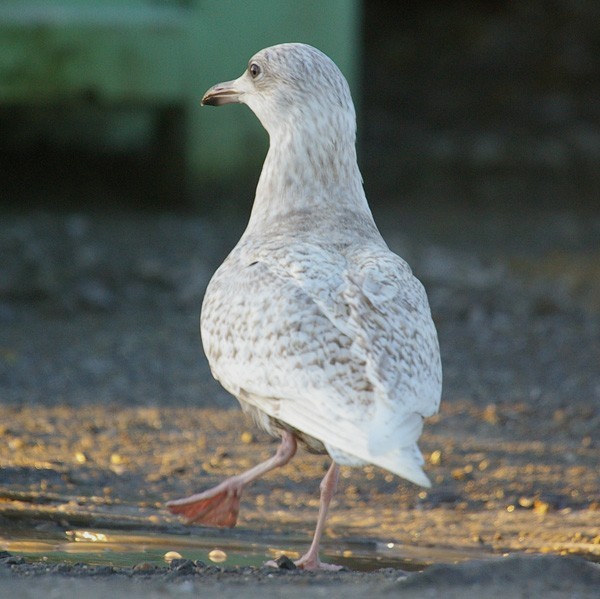
Iceland Gull, Killybegs, Donegal (Photo: Derek Charles)

Ring-billed Gull, Dundee, Angus & Dundee (Photo: Tom Moodie)
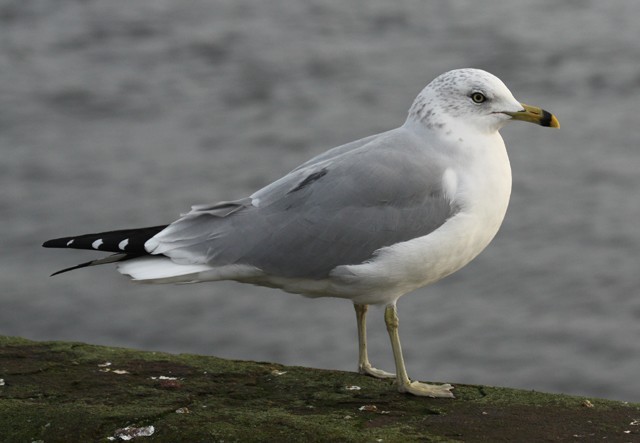
Ring-billed Gull, Dundee, Angus & Dundee (Photo: Willie Mcbay)
The adult American Herring Gull reappeared at Nimmo's Pier (Co. Galway) on 6th (the bird was first seen at this fantastic gull-watching venue, as a smoky youngster, in January 2004). Around 30 Caspian Gulls were seen in the country over the past few days, with two birds at Calvert Lakes (Buckinghamshire) on 7th and two first-winters at Aldeby Tip (Norfolk) on 10th (at least four birds were present in the county during the week). At least two different birds were seen in London during the week, and two birds were also in Staffordshire and Suffolk. A single adult was noted at Blashford Lakes (Hampshire) on 6th–7th. After fewer than 30 birds last week, Iceland Gull numbers rose again this week, to around 55 birds, with six being seen at the Shetland Catch Factory, near Lerwick, on 6th (along with three Glaucous Gulls). A further half-dozen were seen some 10km off Galley Head (Co. Cork) on 10th. Two birds were seen at Ditchford Gravel Pits (Northamptonshire) on 8th while at least four birds were seen on Orkney and another dozen or so were seen in Ireland, including "threes" at Killybegs (Co. Donegal) and Rossaveal (Co. Galway) on 6th. A juvenile Kumlien's Gull was seen on Forfar Loch (Angus) on 4th. A poor week for Glaucous Gulls last week (when only 14 were noted) changed back to a more reasonable tally of at least 45 this week. At least eight birds were on Shetland (including four on Unst on 7th), while up to three were seen in Warwickshire, and two birds were seen in Cleveland, Leicestershire, Norfolk and Suffolk (including a briefly seen colour-ringed bird at Southwold on 7th). In Ireland, seven birds were seen including three at Killybegs on 6th. The adult Ring-billed Gull at Dundee (Angus) continued to show well to 10th, with further adults remaining at Angle Bay (Pembrokeshire), Oban (Argyll), Westcliff-on-Sea (Essex), Gosport (Hampshire) and the Isle of Dogs (London). This latter bird has been parading itself to London birders since November 1996 and, having arrived as an adult, is at least 15 years old. The second-winter Ring-billed Gull was still at Lamby Lake (Glamorgan) to 7th and the first-winter bird at Helston (Cornwall) remained to 10th. New first-winter birds were seen at Antrim on 4th and Bantry (Co. Cork) on 7th, while on 6th single birds were seen at Cuskinny Marsh (Co. Cork), Sandymount (Co. Dublin) and Nimmo's Pier (Co. Galway), with three birds at the final site on 9th. On the same date a further Irish adult was at Ballydehob (Co. Cork) and on 10th, also in Cork, another adult was seen at Rosscarbery and a second-winter bird was still at Clonakilty. Also on 10th, a Forster's Tern was seen in Rusheen Bay (Co. Galway).

Great Grey Shrike, Thornseat Delf, South Yorkshire (Photo: Richard Hill)
Two Richard's Pipits were seen this week, both on 7th, at Polgigga (Cornwall) and The Hythe (Essex). Eleven Great Grey Shrikes were seen: on 4th birds were seen near Princes Risborough (Buckinghamshire) and Lakenheath (Suffolk). On 6th, singles were noted from Langdale Forest (North Yorkshire) and Icklesham (East Sussex), while on 7th, Great Grey Shrikes were seen at Oakers Wood (Dorset), Mundesley and Castle Rising (Norfolk) and Thornseat Delf (South Yorkshire). The 8th saw a Great Grey Shrike at Charterhouse (Somerset) finding its way to the news services, (this bird was first seen on 5th) while on 10th, birds were seen in the New Forest (Hampshire), near the Slufter's Enclosure, and at Draycote Water (Warwickshire).

Waxwing, Grange-over-Sands, Cumbria (Photo: Richard Fox)
There were still plenty of Waxwings on offer this week, with counties north of the border still very much in the ascendant. At least 400 were seen in Edinburgh (Lothian) on 4th, with 150 or more perched outside the RSPB Regional Offices in Aberdeen on 5th, and 200+ still together in one flock in Glasgow on the same date. On 6th, a minimum of 350 were seen around Ayr and 100 were seen in Clydebank (Clyde) on 7th. The largest flock reported on 8th was 120 birds at Skinflats Lagoon (Forth), while at least 270 birds were still around Glasgow. At least 300+ Waxwings remained in Edinburgh on 9th and 250+ were still in Ayr. Several decent-sized flocks were recorded in (what is loosely termed) the northeast of England this week. At least 65 were seen in Newcastle-upon-Tyne (Northumberland) on 5th, followed by 60+ over Kirklevington (Cleveland) on 6th and 90 at Hillsborough in Sheffield on 8th, with the Cleveland flock rising to 100+ by the 10th. In the northwest, 32 were seen in Keswick (Cumbria) and 24 were at Ballalough, Andreas (Isle of Man) on 4th; on 5th, at least 120 were seen around Carlisle (Cumbria), including a flock of 95. At least 50 birds dropped into Salford (Greater Manchester) on 7th with flocks of 49 and 46 in Keswick and Penrith (Cumbria) on 8th. Over a dozen sites in the Midlands boasted single-figure groups of Waxwings this week, with 15 at Uttoxeter (Staffordshire) on 4th the largest flock recorded. Eight sites in Norfolk recorded Waxwings this week, with 26 over Holkham the largest group noted in East Anglia, followed by 24 at Rendlesham (Suffolk) on 9th and 14 in Norwich on 6th. Further singles were seen elsewhere in Suffolk and also in Cambridgeshire, where two were seen at Eynesbury on 10th. There were no birds in the southeast, but one bird made it to the southwest, seen at Bradford-on-Tone (Somerset) on 5th, with two West-country birds making it to Pucklechurch (Gloucestershire) on 9th. Six birds appeared in Wales: two were in Llandridnod Wells (Powys) on 6th, three made it to Cyrn-y-Brain (Clwyd) on 7th with one in Maesteg (Glamorgan) on 8th, while in Ireland, 27 were seen at Lisburn (Co. Down) on 4th, and a flock of 70 were in Dublin on 5th (with 41 at Blackrock on 7th). The 6th saw the Lisburn flock rise to 40 and County Antrim also welcomed a flock of 25 birds to Ballymena. On 7th, 14 Waxwings were in Dundalk (Co. Louth), 40 were at Ballisodare (Co. Sligo) and 100 birds were counted in Lisburn.
There were no warblers of any real note this week (save for half a dozen reports of Siberian Chiffchaffs countrywide) so it's straight on to Penduline Tit. Two birds spent the morning of 6th at Rainham Marshes (London) before flying off high to the north. This is the fifth year in a row that the species has been recorded here (birds have been seen in 2004, 2005 into 2006 and from 2006 into 2007, famously including six birds on 19th December 2005). Rainham was also still playing host to a Serin this week, one bird seen on 5th–6th, while a few hundred miles to the north, the Common Rosefinch was still being seen around gardens in Whitburn (Co. Durham) to 8th at least.
Photo of the Week

Common Buzzard, Neston, Cheshire (Photo:
Graham Eaton)
Graham Eaton is a photographer who's happy to get his feet wet in the pursuit of stunning wildlife images. His well-known images of wildfowl taken from underwater are among the most imaginative bird photos we've ever seen. Although not quite such an extreme technique as submerging yourself, Graham used a radio trigger to capture this week's winning image of an alighting Common Buzzard. Some photographers regard the use of radio triggers as a contrivance or even a cheat, but there is no doubt that, for those who are dedicated enough to painstakingly refine the set-up, it's possible to capture action images at the instant of perfect pose. In this case, Graham has frozen the Buzzard with wings and tail fanned for maximum deceleration, talons outstretched and eyes fixed on the point of landing. With a typical environmental setting and a tight crop to accentuate the tension, Graham has created a powerful and natural image.
Other notable photos

Barn Owl, undisclosed site, Lancashire (Photo: David Cookson)
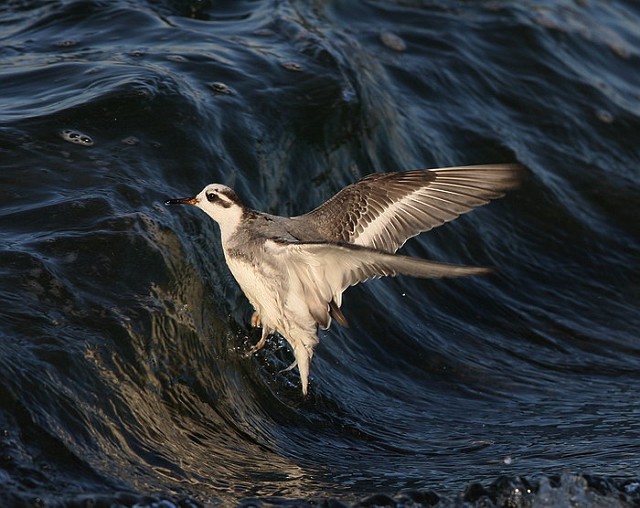
Grey Phalarope, Covenham Reservoir, Lincolnshire (Photo: Dean Eades)

Marsh Tit, Hampton, Worcestershire (Photo: Mark Hancox)

Common Redshank, Meols, Cheshire (Photo: Mike Atkinson)

Sparrowhawk, Llandrindod Wells, Powys (Photo: Kev Joynes)

Marsh Harrier, Grove Ferry NNR, Kent (Photo: Steve Ashton)

Houbara Bustard, Canary Islands (Photo: Darran Rickards)

Common Kestrel, Marshside RSPB, Lancashire (Photo: Tom Charles)

Fieldfare, Shillito Wood, Derbyshire (Photo: Robert Askew)

Common Crane, France (Photo: Rudi Debruyne)

Goldcrest, undisclosed site, Norfolk (Photo: Peter Simpson)
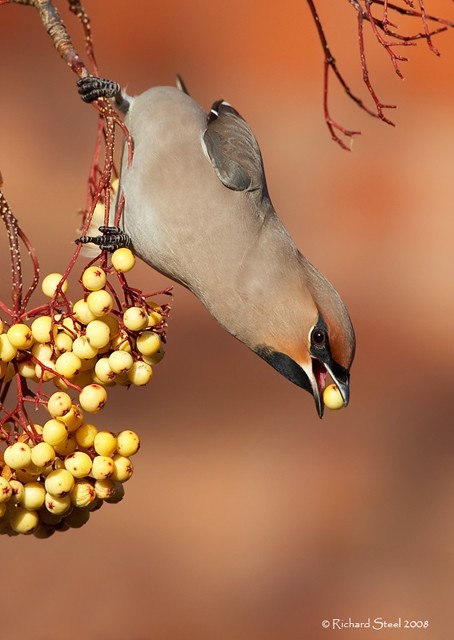
Waxwing, Preston, Lancashire (Photo: Richard Steel)

Shoveler, Kensington Gardens, London, Greater (Photo: Fraser Simpson)
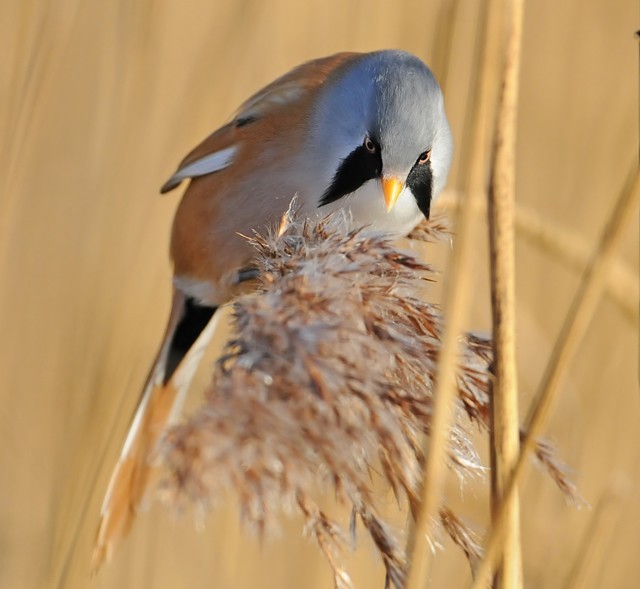
Bearded Tit, Cosmeston Lakes CP, Glamorgan (Photo: Kev Joynes)

Green Woodpecker, Wyre Forest, Worcestershire (Photo: John Robinson)

Goldfinch, Chamber's Farm Wood NR, Lincolnshire (Photo: Matt Latham)

